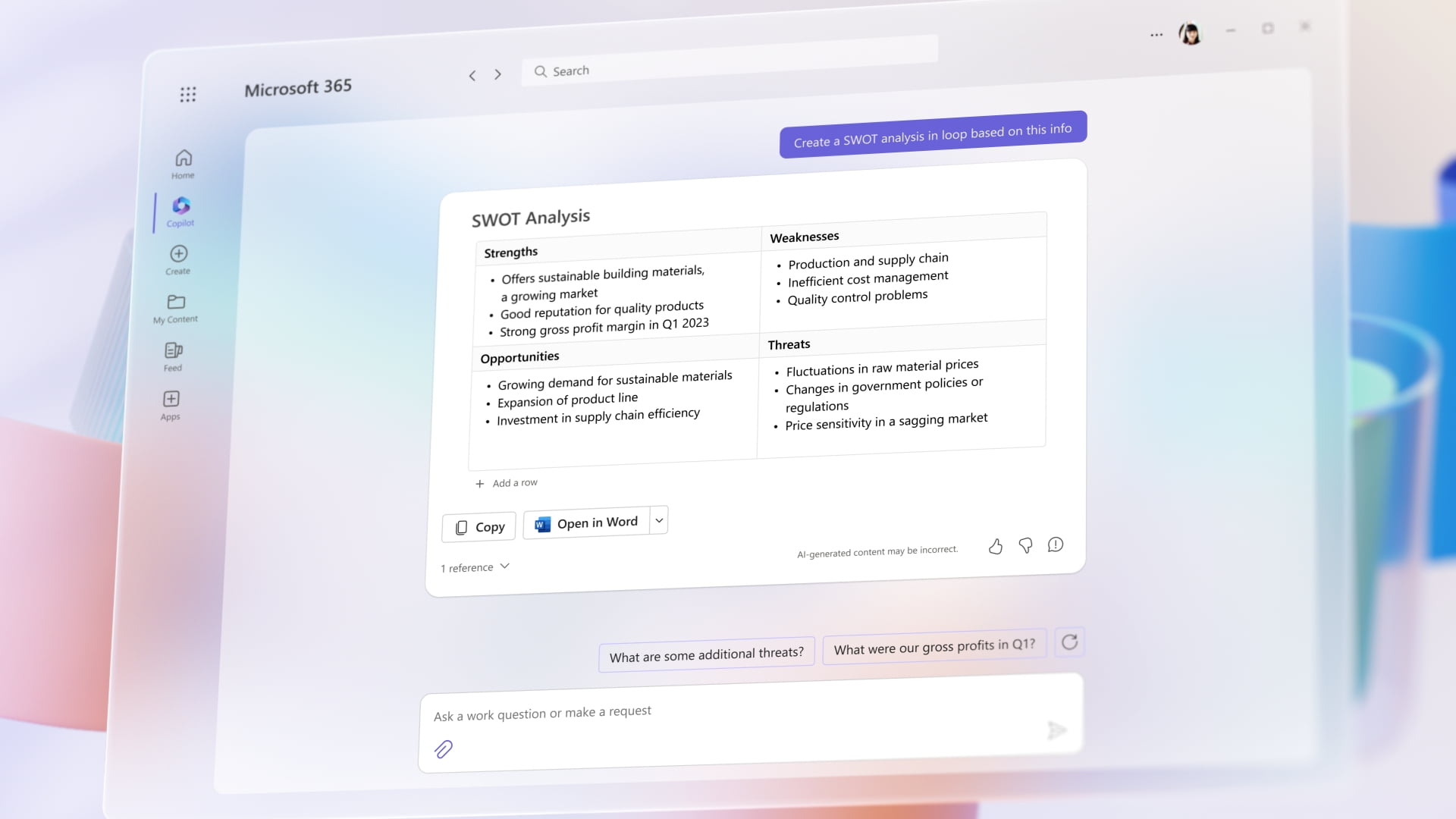Microsoft announces AI co-pilot for 365 apps

Key Points
- Microsoft 365 Copilot brings generative AI to 365 apps like Word, Excel, and Teams, as well as Business Chat, a central chatbot that can access all apps and data.
- Copilot is part of the Copilot system, which grounds user prompts in their data from the Microsoft Graph and allows them to be processed together by a large language model from OpenAI. This should reduce errors and make Copilot useful, according to the company.
- Microsoft plans to test Copilot with select customers before rolling it out more broadly.
Microsoft 365 Copilot brings generative AI to apps like Word, Outlook, Excel, Teams, and PowerPoint. The company also announces Business Chat, a new way to interact with your data.
Microsoft 365 Copilot is said to combine the power of large language models with the productivity of Microsoft 365 apps and the Microsoft Graph. Copilot is expected to be integrated into all apps where it will help users write, summarize, or create spreadsheets. Supported apps include Word, Excel, PowerPoint, Outlook, and Teams.
In Word, for example, Copilot can write a product announcement and provide users with available documents or presentations as a template directly in the chat interface as context. In PowerPoint, for example, Copilot can create a presentation from a press release. In Excel, Copilot can analyze data and answer questions such as which products were profitable in a quarter. In Outlook, the AI writes a response that references content from another document that users can specify as context.
Microsoft's 365 Copilot comes with Business Chat - a new way to interact with your data
For team channels, you can create a summary or ask questions about conversations. For live meetings, Copilot provides an overview of what has been discussed so far, what points of view certain people have, and what questions are still open. Microsoft is also integrating Copilot with Power Automate, where you can now quickly create automated workflows using the chatbot.
In addition, Microsoft announced Business Chat, a chatbot interface that can access data from all shared documents, calendars, and other applications. In the presentation, Microsoft will show how Copilot uses Business Chat to compile a wide range of information from various apps in response to the input "Prepare me for my meeting" and output an overview.
Microsoft focuses on grounding prompts in your data
Microsoft says the language model behind Copilot is built into the Copilot system. "We didn't just link ChatGPT with Microsoft 365," explains Jared Spataro, CVP at Microsoft. So instead of sending user prompts directly to the language model, it uses them to pull data relevant to the task from the Microsoft Graph. Graph includes all the data available in the cloud, such as appointments, chats, emails, or documents. This information serves as grounding for the prompt and is fed collectively to the language model. The language model's response is then matched against Graph by Copilot and checked for security and privacy parameters.
According to Microsoft, the grounding in the graph avoids some of the problems of large language models, though the company still expects errors. Similar to Google's AI push, Microsoft's 365 Copilot will only be available to a select group of customers for now. "Of course, with this empowerment comes greater human responsibility," Microsoft CEO Satya Nadella says at the start of the presentation. Nadella doesn't just see his own company as having such responsibility: "As we move into this new area, all of us who develop, deploy and use AI have a collective obligation to do so responsibly."
Two days ago, Google also announced generative AI for Google apps such as Docs or Gmail.
AI News Without the Hype – Curated by Humans
As a THE DECODER subscriber, you get ad-free reading, our weekly AI newsletter, the exclusive "AI Radar" Frontier Report 6× per year, access to comments, and our complete archive.
Subscribe now